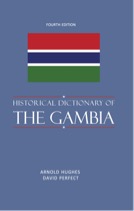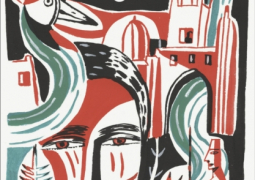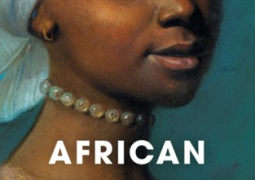
Author
David Perfect has carried out research on Gambian politics and history since 1983 and has previously co-authored two books on The Gambia. He works in research management for the Equality and Human Rights Commission and is a Visiting Research Associate at the University of Chester.
Selected entries on Education
The Gambia achieved its independence from Great Britain on February 18, 1965 and became mainland Africa's smallest state. Despite its small size and population, it was able to establish itself as a functioning parliamentary democracy for nearly 30 years, avoiding the common fate of other African countries, which soon fell under authoritarian single-party rule or experienced military coups. In addition, its political stability and modest economic success enabled it to avoid remaining under British domination or being absorbed by its larger French-speaking neighbor, Senegal, as anticipated by many at the country's birth. It was also able to defeat an attempted coup d'état in July 1981. However, just as other African states were returning to democratic government, Gambian democracy finally succumbed to a military coup on July 22, 1994. Since then, the restoration of democracy has remained incomplete and disputed, as does the military successor government's attempts to meet the country's economic and social needs.
The fourth edition of the Historical Dictionary of The Gambia―through its chronology, introductory essay, appendixes, map, bibliography, and hundreds of cross-referenced dictionary entries on important persons, places, events, institutions, and significant political, economic, social, and cultural aspects―provides an important reference on this burgeoning African country. (Source Amazon)
EDUCATION. The Gambia’s modern educational system was established during the colonial period and was characterized by an initial heavy reliance on the Anglican, Catholic, and Wesleyan missions and a disproportionate concentration of school facilities in the Colony area, to the neglect of the Protectorate. Educational provision also favored boys’ schooling over that of girls. Most schools are now either directly under state direction or follow government decreed syllabi and are subject to official regulation and oversight. There remains a considerable external voluntary input into educational provision at all levels.
Under the Dawda Jawara and Yahya Jammeh governments, there has been an attempt to extend schools into the Provinces; to increase educational opportunities for girls and other neglected social groups, such as adult illiterates; and to tailor educational syllabi to meet national development goals and to overcome poverty. As a result, school enrollment has grown considerably and the number of girls attending schools has increased sharply; there are now slightly more girls than boys at Senior Secondary level. Under the Universal Primary Education policy, the goal is to achieve full school attendance by 2012. Problems remain, both in meeting this target date and in improving the standards of schools and the teaching profession.
In 2007, educational provision was divided into pre-school, a nine-year Lower and Upper Basic (primary and lower secondary) cycle and a two-year Senior Secondary cycle. In 2005–06, school enrollments were: Lower Basic 154,664; Upper Basic 64,392; and Senior Secondary 26,600. There were 411 Lower Basic, 160 Upper Basic, and 49 Senior Secondary schools. Thirty-six of the latter schools were in the Greater Banjul and Brikama areas, reflecting both the traditional bias toward these coastal areas and a rapid shift in population to urban areas.
Tertiary and vocational education has been extended under the Jammeh government and, reflecting these priorities, in 2007, a separate Ministry of Higher Education, Research, and Scientific Technology was created, with its own secretary of state. The four higher-level institutions are the University of The Gambia, established in 1999; the extension and upgrading of the pre-existing Gambia College (teacher training, and agricultural and health studies); the Management Development Institute; and the Gambia Technical Training Institute.
BASIC AND SECONDARY EDUCATION, The first schools in the Gambia were established by Methodist missionaries, with John Morgan setting up the first one in 1822 in Bathurst. By the mid-1820s, there were about 70 children in the school and by 1841, there were 268 pupils in the three Methodist schools in Bathurst, the Ceded Mile and MacCarthy Island. The first Roman Catholic schools (one for boys and one for girls) were established in 1850 and the first Anglican school in 1869. During the 19th and early 20th centuries, enrollment was usually highest in the Methodist schools and lowest in the Anglican ones. No schools provided a Koranic education until 1903 when the “Mohammedan School” was established in Bathurst, with some Muslim children attending the missionary-run schools. The first secondary school was the Wesleyan Boys’ High School founded in 1879, but by 1930, there were four such schools: two Methodist and two Catholic. In 1945, the Gambian government took over the administration of the elementary schools under the director of education, but it was not until 1959 that the two Methodist secondary schools formed the nucleus of the new Gambia High School; the two Catholic secondary schools retained a separate existence. By 1960, enrollment in the 12 government primary and three private elementary schools in Bathurst exceeded 3,700, while enrollment in the four secondary schools in Bathurst was 600. Outside the Colony area, education in the Protectorate remained badly neglected. By 1960, there were still only 37 village primary schools, which were attended by 2,200 pupils, with only Armitage School offering a secondary education. Whereas 85 percent of the school-age population of Bathurst attended school in 1960, only five percent of the Protectorate population did so. Educational provision also strongly favored boys’ schooling over that of girls.
After independence, the People’s Progressive Party government made determined efforts to increase school education, including by building more schools (19 new primary and 10 new secondary schools had been opened by 1975). Whereas only 11,500 pupils attended primary schools in 1964-65, 113,000 did so in 1994-95; the number of secondary school pupils rose from 3,000 in 1964 to 32,000 in 1994-95. The gross primary enrollment rate, the proportion of the relevant age group enrolled in primary schools, also increased from approximately 21 percent in 1964-65 to 73 percent in 1993, while the secondary enrollment rate had risen to 19 percent in 1993. The rise in the female primary enrollment rate was particularly striking, from 15 percent in 1970 to 61 percent in 1993, but the historic advantages of the capital, Banjul, over the rest of the country remained, and government expenditure cuts under the Economic Recovery Programme, reduced the rate of progress in new school construction.
The trends of rising enrollment rates have continued under President Yahya Jammeh, while the previous gender gaps have been reversed. UNESCO data indicate that in 2014, the primary enrollment rate had reached 86 percent, with the female rate (88 percent) now exceeding the male rate (84 percent). The female enrollment rate was also higher than the male rate at lower secondary level (65 percent, compared with 63 percent). The female enrollment rate had also exceeded the male rate at upper secondary level (the last year for which data are available).
In 2007, educational provision was divided into pre-school, a nine-year lower basic education (LBE) and upper basic education (UBE) (equivalent to primary and lower secondary) cycle and a two-year senior secondary education (SSE). This remains the case. Children now normally start school at age 7 and so complete UBE at age 16, with entrance to SSE dependent on their final examination results.
In 2009-10, a total of 303 thousand students were enrolled in LBE or UBE schools, compared with 223 thousand in 2000-01 (a 36 percent increase). Much of the growth was fueled by a more than doubling of enrollment in both madrassas (Islamic religious schools) and private schools. Enrollment of students in SSE increased over the same period from 16 to 36 thousand (a 132 percent increase). In 2009-10, the gross enrollment ratio (the proportion of the relevant age population enrolled) was 88 percent for LBE, 66 percent for UBE and 34 percent for SSE. Significant regional disparities remain. Thus whereas in Banjul enrollment rates in 2009-10 were 92 percent (LBE), 64 percent (UBE) and 41 percent (SSE), in the Upper River Region, the equivalent figures were 51, 14 and 5 percent.
Prior to independence, there were only three ministers of education: D.K. Jawara (1960-61); Andrew Camara (1961-62; 1963-64) and; Paul Baldeh (1962-63; 1964-65). Baldeh served as the first minister after independence (1965-66), being followed by Kalilou Singhateh (1966-70); I. M. Garba-Jahumpa (1970-72); M. C. Cham (1972-77); A. M. Camara (1977-78; 1981-83); Dembo Jatta (1978-81); A. K. N’Jie (1983-85); Louise N’Jie (1985-87; 1991-92); Bakary Dabo (1987-91); and A. E. W. F. Badjie (1992-94). In the Second Republic, there have been only three ministers or secretaries of state of education: Satang Jow (1994-98), Anne Therese Ndong Jatta (1999-2004), and Fatou Faye, who was appointed minister of education in 2004 and became minister of basic and secondary education in February 2007. Faye retains this position at time of writing.
HIGHER EDUCATION. During the colonial period, the only higher education provision available was provided by Yundum College which offered a teacher training program. Gambians seeking higher education had to go abroad, usually before independence to Great Britain, and most were reliant on family funding. During the First Republic, some attention was given to higher education with Gambia College being established in 1978, but no universities were built. Gambians seeking higher education increasingly chose to do so in the United States rather than in Britain; in the 1970s and 1980s, a significant number also received scholarships to attend Eastern European universities.
Under the Second Republic, there has been an expansion of higher and vocational education and, reflecting these priorities, in 2007, a separate Ministry of Higher Education, Research, and Scientific Technology was created, with its own secretary of state. The four higher-level institutions are the University of The Gambia, established in 1999; the extension and upgrading of the pre-existing Gambia College (teacher training, and agricultural and health studies); the Management Development Institute; and the Gambia Technical Training Institute.
Since 2007, there have been seven ministers or secretaries of state, several of whom have held the portfolio more than once: Crispin Grey-Johnson (2007; 2008-09); Abdoulie Sallah (2007-08); Momodou Tangara (2010; 2012; 2012-13); Mariama Sarr-Ceesay (2012); Mambury Njie (2012); Aboubacar Senghore (2014); and Momodou Sabally (2014). Senghore who was reappointed to the position in August 2014 retains it at time of writing.
UNIVERSITY OF THE GAMBIA (UTG). The UTG was formally established in March 1999, with major support from a Canadian university, St. Mary’s, in Halifax, Nova Scotia, and the Cuban government. It brought together several existing tertiary educational and vocational institutions while also setting up new academic faculties. The first 300 students were enrolled in September 1999 (with the first cohort graduating in 2002) and there were approximately 2,000 students enrolled in 2006-07. The main location of the UTG is in Serrekunda, while President Yahya Jammeh was installed as its chancellor in February 2000. Its acting vice chancellor at time of writing is Professor Mustapha I. A. Khalil who was appointed in June 2015. His substantive predecessor was Professor Muhammadou M. O. Kah, who had become the first Gambian vice chancellor in May 2009. Kah was replaced a day after UTG students had staged a protest against a new grading system which Kah had introduced and championed, with some opposition newspapers claiming that he had been sacked as a result of this.





